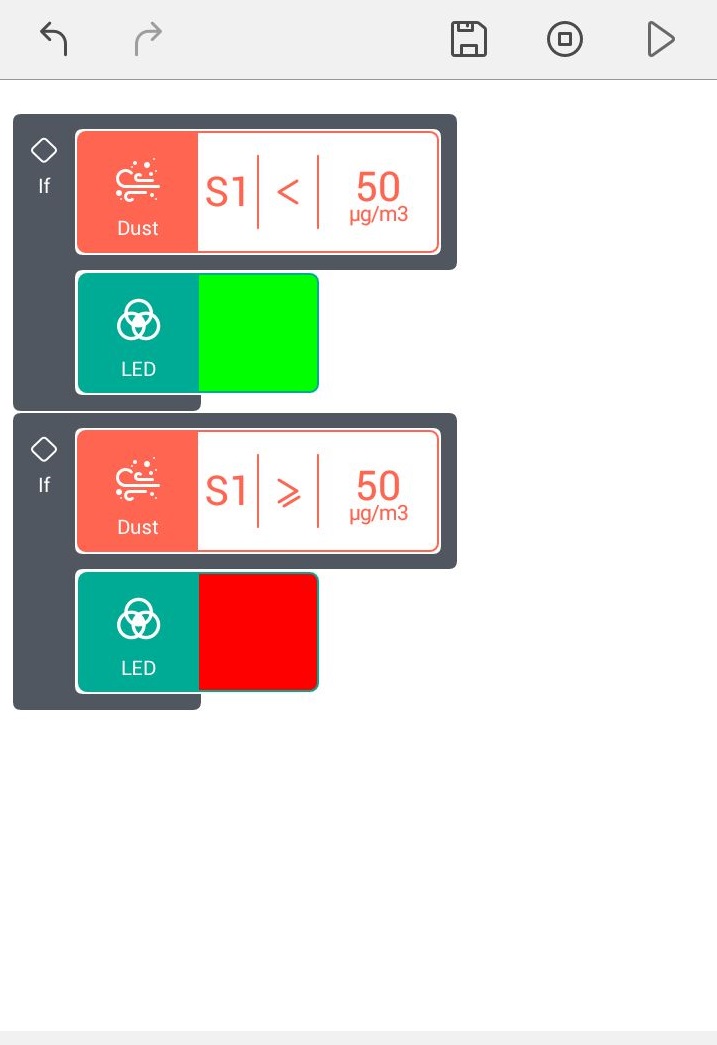Description
A Dust Sensor gives a good indication of the air quality in an environment by measuring the dust concentration. The Particulate Matter level (PM level) in the air is measured by counting the Low Pulse Occupancy time (LPO time) in given time unit. LPO time is proportional to PM concentration.
Block description
This block can be used in analog mode to receive inputs (integer values) from a Dust sensor connected to any of the ports S1, S2, S3.
Hardware interface
Connecting an external Dust sensor
Note: While connecting an external sensor to the Cloudio board, care must be taken to match the polarities of the sensor with that of the port (S1/S2/S3) that it is being connected to.
Cloudio currently supports the Sharp GP2Y1010AU0F Optical Dust Sensor Module.
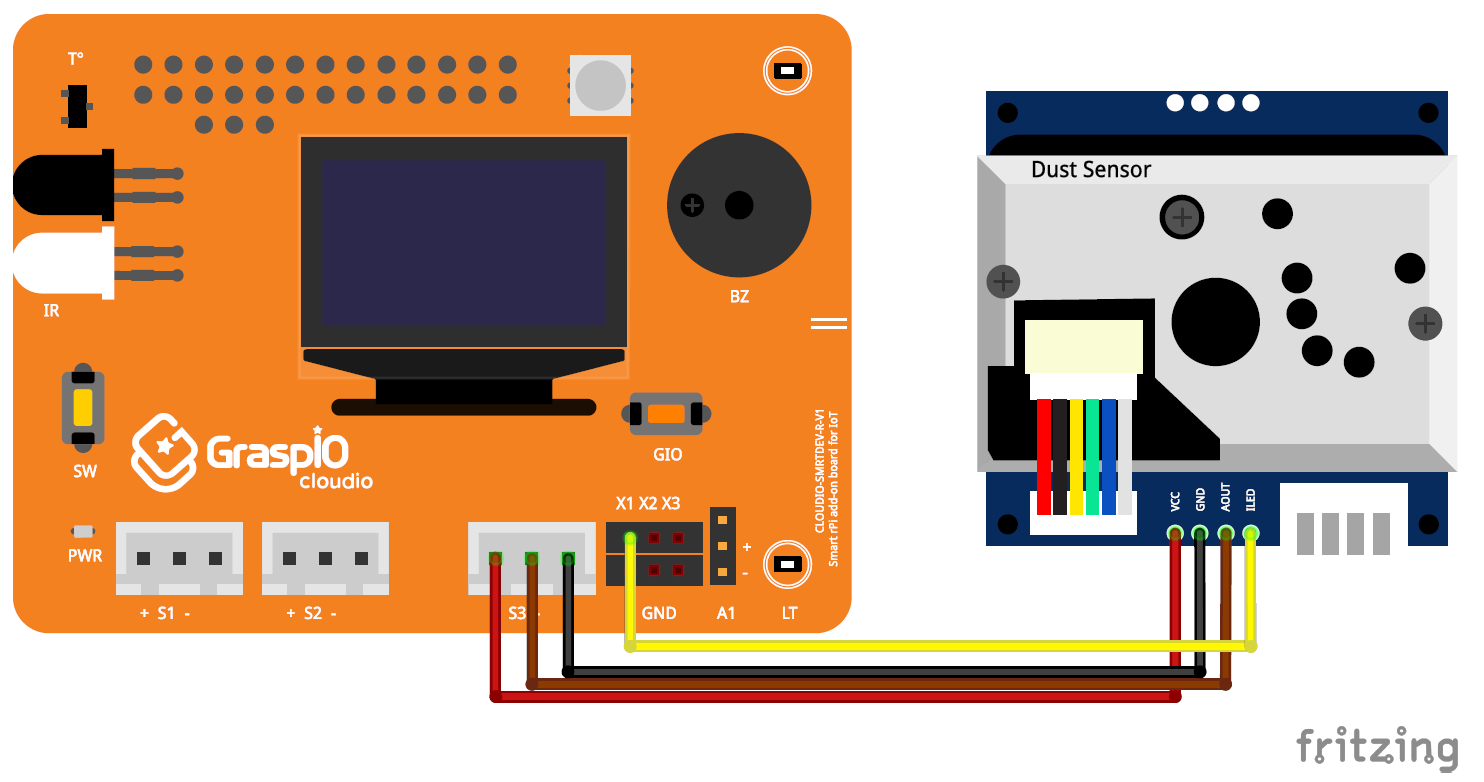
App interface and usage
Port :
Here, you can select the port the Dust sensor is selected to - S1/S2/S3.
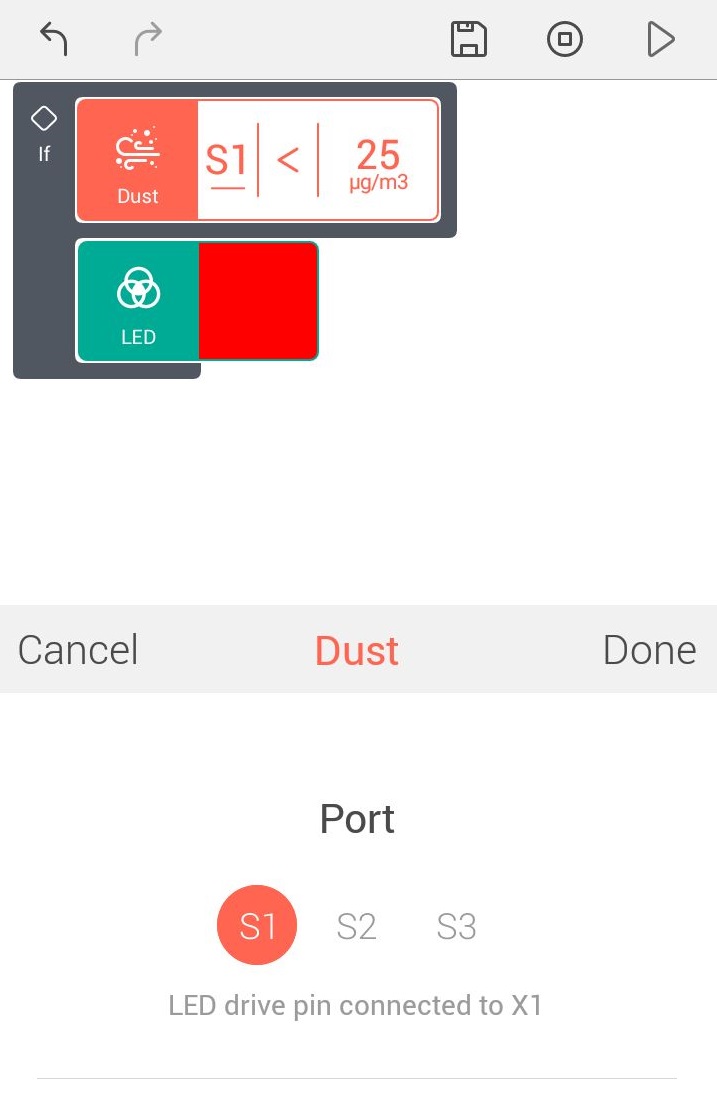
Operator:
Here, you can select the operator to be used while comparing the values received from the sensor against the threshold value set in the next step.
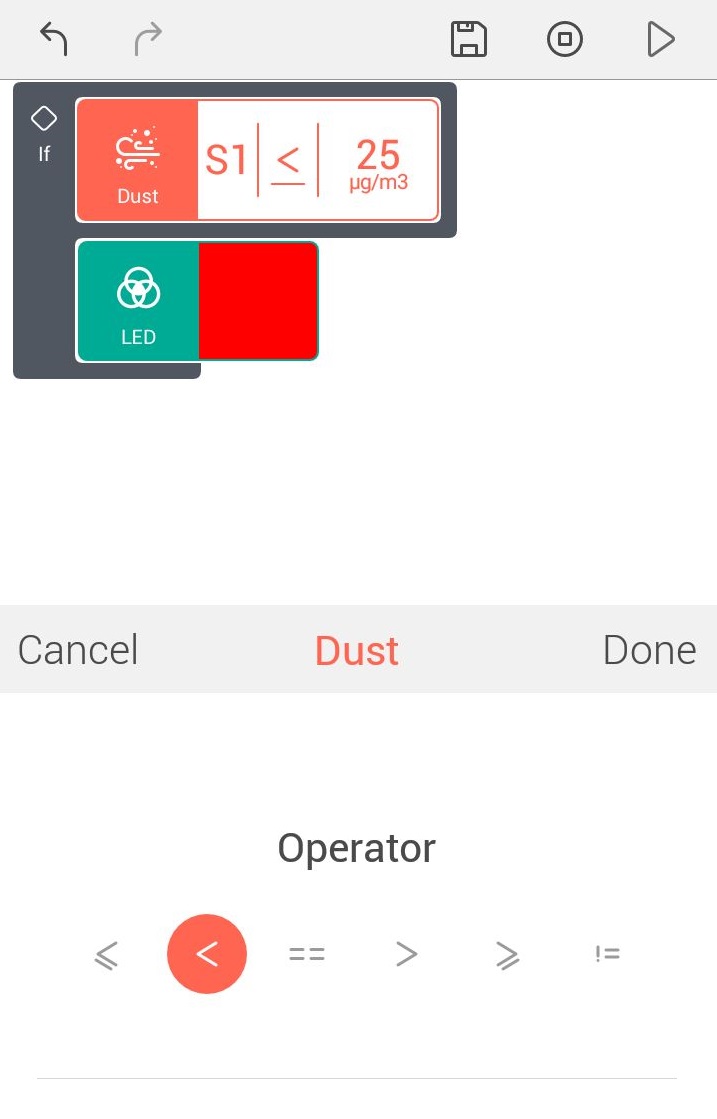
Value:
You can set a threshold integer value in the range 0 to 999 for comparison.
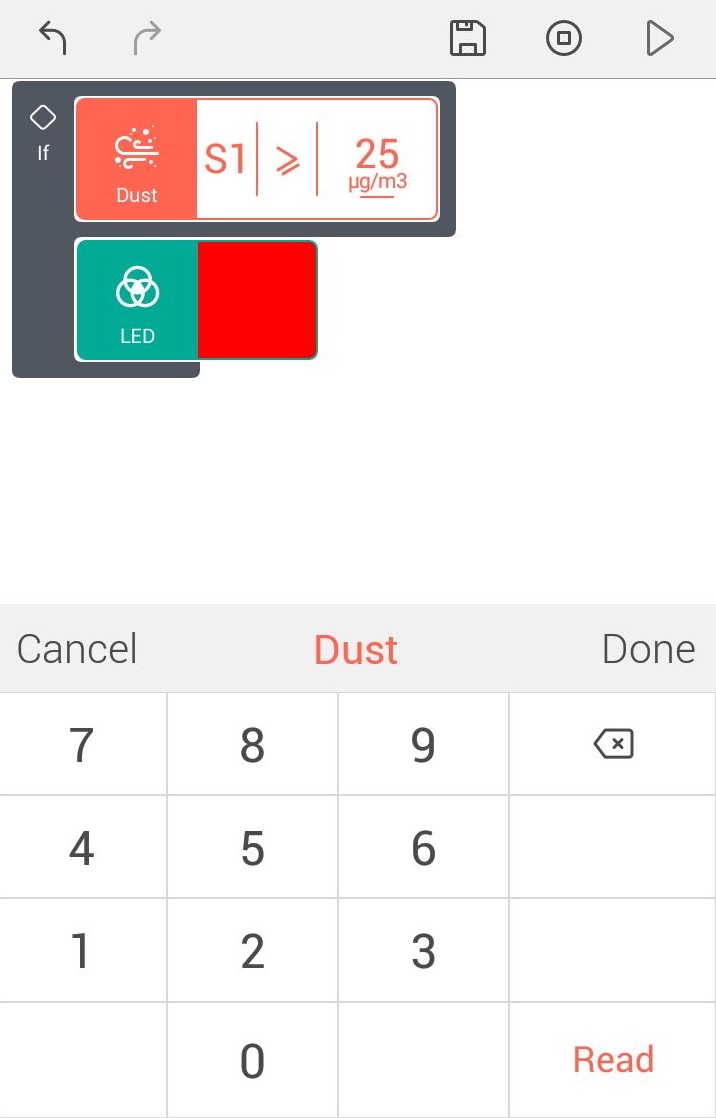
You can use the Read option to read/receive real-time values from the port selected.
After you set the parameters for the block, you can press Done to confirm and save your changes.
Example
- The below project snippet turns the LED green if the reading from the dust sensor is less than 0.5 milligram per cubic metre, and red if it is greater than or equal to 0.5 milligram per cubic metre.
Note: This is a code snippet to explain the working of the block. In this case, this code will be executed once and at the time of uploading the code.
You will need to use this snippet inside a loop infinitely block if you want this code to run on the board for the entire duration that the board is on.
